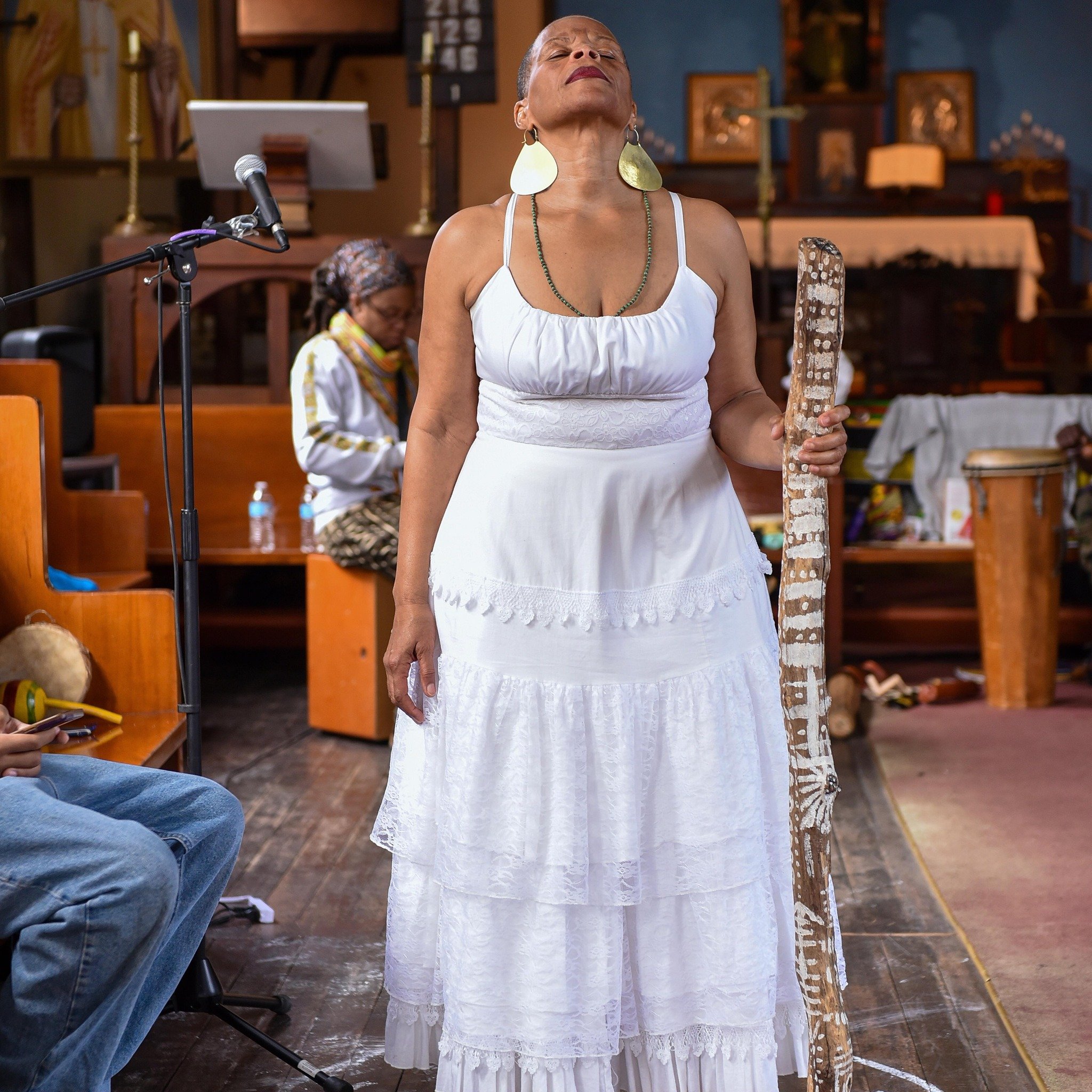Ifé Franklin on Hush Harbors, Ancestral Memory, and Black Queer Freedom
Before there were runways, there were hush harbors—secret, sacred spaces created by enslaved Africans in the woods, where they gathered to worship, mourn, dream, and scheme.
These were places of resistance, where the white gaze could not reach. Today, those echoes live on in the safe spaces we build for ourselves: backyard parties, open mics, collective rituals, and cultural gatherings where we are free to be loud, Black, Queer, Trans, divine, and whole.
Artist and cultural worker Ifé Franklin understands this legacy intimately. Her work—spanning performance, installation, and ancestral ceremony—breathes life into forgotten lineages and reclaims them for the present. We sat down for a conversation about Hush Harbors, memory, and what it means to create spaces of freedom, especially for Black LGBTQ+ people. Our talk was rooted in love, power, and a shared commitment to making space for the fullness of who we are.
Amir: For those who may not know, what is the historical significance of Hush Harbors, and how do you see their spirit living on in the creative and spiritual work you do today?
Ifé: A Hush Harbor—also called a hush arbor, or brush arbor— refers to a secret, often secluded, place where enslaved African Americans would gather to practice their religious traditions, particularly during the antebellum period in the United States. These gatherings were often clandestine because they were free from the supervision of enslavers, who feared unsupervised religious gatherings, as this was a place where revolts and rebellions were planned.
“Black Queer and Trans folks have always incorporated the tradition of the Hush Harbor into our everyday lives—even when we didn’t fully understand our collective ancestral remembrance of these spaces.”
Amir: The Hush Harbor you facilitated at St. Augustine’s was a powerful activation of ancestral space. What was your intention in creating that gathering, and what did it reveal about community, memory, and collective joy?
Ifé: The legacy of St. Augustine’s Church has a history of creating space for freedom. The all-Black, mostly Caribbean congregation had a direct connection with Marcus Garvey, who wanted Black folks to break free of America and create our own destiny. My intention was to definitely activate the space for ancestors of BIPOC folk, and to continue the vision of the original Hush Harbors—a safe space… just to be. A space where the white gaze in all its forms does not penetrate, a place for us to sing, dance, moan, pray, or sit in silence. A place/space just for us.
Share this article
Qwear is an independent platform that empowers LGBTQIA+ individuals to explore their personal style as a pathway to greater self-confidence and self-expression.
We’re able to do this work thanks to support from our amazing community. If you love what we do, please consider joining us on Patreon!
Support Us on Patreon

